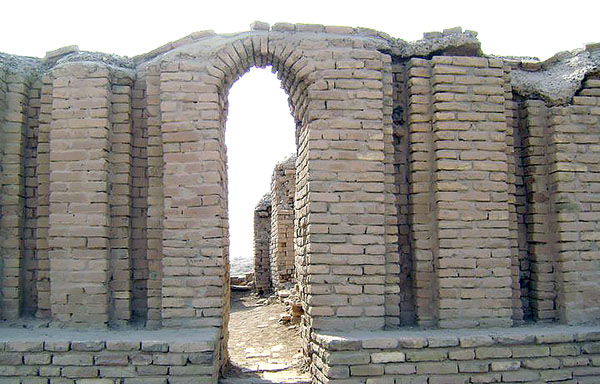
Ruins of the Ziggurat of Ur, excavated in the 1920s, partially rebuilt in the 1980s; photo credit Karina Parks.
![]()
When you work on most of your assignments in this history course, your instructor will expect that you cite historical evidence to support your analysis points. What exactly does that mean? Let's look at some examples.
In your paper you write, "I think the Declaration of Independence mentioned natural rights." Phrases such as "I think" or "I believe" indicate opinion. That is not analysis. You can always have an opinion but an opinion does not equal a statement of fact. The sky can be blue and cloudless, and you might say, "I think that this is terrible weather." That's an opinion, and you are completely free to have an opinion, but that is not a statement that is true or correct nor a statement with supporting proof.
In your paper you write the following declarative statement, "The Declaration of Independence contained information on natural rights." This is a statement of fact, not an opinion, or maybe it is an opinion. How is the reader to know if that statement is true or false? There is no evidence to support that the statement is a correct fact. It might be right, but let's be certain. You need evidence to support the statement.
In your paper you write, "The Declaration of Independence affirmed the fact that people have natural rights and defined those rights as follows, "that all men are created equal, that they are endowed by their Creator with certain unalienable Rights, that among these are Life, Liberty, and the pursuit of Happiness." In this case you support a statement of fact with quoted historical evidence from the referenced document. The evidence supports and proves that your statement is correct and a fact. That is historical analysis.